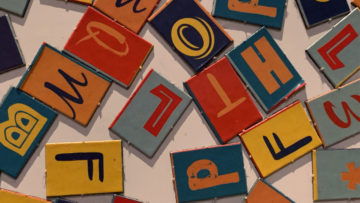Morten H. Christiansen and Nick Chater at Literary Hub:
 Languages change continually and in wide variety of ways. New words and phrases appear, while others fall into disuse. Words subtly, or less subtly, shift their meanings or develop new meanings, while speech sounds and intonation change continually. Yet perhaps the most fundamental shift in language change is gradual conventionalization: patterns of communication are initially flexible, but over time they slowly become increasingly stable, conventionalized, and, in many cases, obligatory. This is spontaneous order in action: from an initial jumble increasingly specific patterns emerge over time.
Languages change continually and in wide variety of ways. New words and phrases appear, while others fall into disuse. Words subtly, or less subtly, shift their meanings or develop new meanings, while speech sounds and intonation change continually. Yet perhaps the most fundamental shift in language change is gradual conventionalization: patterns of communication are initially flexible, but over time they slowly become increasingly stable, conventionalized, and, in many cases, obligatory. This is spontaneous order in action: from an initial jumble increasingly specific patterns emerge over time.
The tendency toward increasing conventionalization occurs in all aspects of language, and it is largely a one-way street. Conventions become more rigid, not less. As in charades, when we face the same communicative challenge multiple times, our behavior becomes increasingly standardized. Once we’ve established a gesture for “Columbus” in one charade, we’ll stick with it in the unlikely event he comes up again, and the gesture will rapidly become simplified.
Yet when we face new communicative challenges, we retain the ability to be tremendously inventive—including the ability to rework and repurpose the conventions we’ve already established.
More here.
